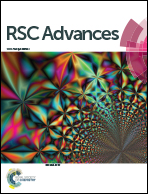Analysis of moisture diffusion mechanism in structured lipids using magnetic resonance imaging
Abstract
The mechanism of moisture migration from a high moisture gel-layer to an adjacent lipid layer was characterized. Three lipid samples: cocoa butter (CB), palm kernel oil (PO) and 20% (w/w) cocoa powder in palm kernel oil (CPPO) were prepared by two methods, shearing during crystallization and static crystallization. Using Magnetic Resonance Imaging, samples' moisture uptake at a storage temperature of 20 °C was measured for 91 days and their effective diffusivity values were calculated. It was found that shearing reduces effective diffusivity of moisture in samples, thereby increasing their moisture-barrier capacity compared to unprocessed lipid systems. The mechanism of moisture migration was found to be a combination of Fickian diffusion and relaxation of lipid matrix in the statically crystallized cocoa butter samples, whereas Fickian diffusion was the dominant mechanism in sheared cocoa butter samples. Palm kernel oil samples exhibited a combination of Fickian and relaxation mechanisms, regardless of the processing technique. Whereas the mixture of palm kernel oil and cocoa powder samples showed relaxation-mechanism controlled migration due to the presence of hydrophilic cocoa powder particles.


 Please wait while we load your content...
Please wait while we load your content...